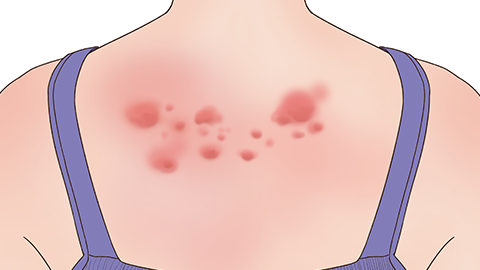How is urticarial vasculitis caused?
Generally, urticarial vasculitis may be caused by abnormal activation of the immune system, genetic factors, infection-induced triggers, adverse drug reactions, or involvement of autoimmune diseases. It is recommended to seek timely medical attention, identify the underlying cause, and undergo symptomatic treatment under a doctor's guidance. Detailed explanations are as follows:

1. Abnormal immune system activation: When the body's immune system becomes dysregulated, it may produce autoantibodies targeting blood vessel walls, triggering vascular inflammation and urticaria, presenting as wheals or purpura. Patients should avoid suspected allergens, maintain regular作息 (作息 translates to作息 rhythm), reduce mental stress, and use immunomodulatory agents under medical guidance to regulate immune function when necessary.
2. Genetic factors: A family history of immune system disorders or vasculitis increases genetic susceptibility, raising the likelihood of developing urticarial vasculitis, which often shows familial clustering. Daily precautions include avoiding infections and allergen exposure, undergoing regular health monitoring, early detection and intervention to reduce disease risk.
3. Infection-induced triggers: Following viral or bacterial infections, pathogens may stimulate immune responses that affect blood vessels, causing inflammation and urticaria, often accompanied by fever and fatigue. Patients should follow medical advice to use medications such as acyclovir tablets, cefuroxime axetil tablets, or azithromycin dispersible tablets to control the infection. Symptoms of urticarial vasculitis typically improve once the infection is managed.
4. Adverse drug reactions: Medications such as penicillins, sulfonamides, and nonsteroidal anti-inflammatory drugs (NSAIDs) may trigger immune responses leading to vascular inflammation and urticaria, often appearing several hours to days after drug administration. Suspected medications should be discontinued immediately. Patients should follow medical instructions to use loratadine tablets, cetirizine hydrochloride drops, or ebastine tablets to alleviate symptoms. Subsequent use of similar drugs should be avoided.
5. Involvement of autoimmune diseases: Autoimmune diseases such as systemic lupus erythematosus and rheumatoid arthritis can affect blood vessels, causing inflammation and resulting in urticarial vasculitis, often accompanied by joint pain and rashes. Patients should follow medical advice to treat the underlying condition using medications such as methylprednisolone tablets, cyclophosphamide tablets, or hydroxychloroquine sulfate tablets to control immune responses and reduce vascular inflammation.
Daily care includes maintaining skin hygiene, avoiding scratching affected areas to prevent skin damage and infection. A bland diet avoiding spicy, irritating foods and known allergens, maintaining regular作息, and enhancing immunity are essential for recovery and prevention of recurrence.










